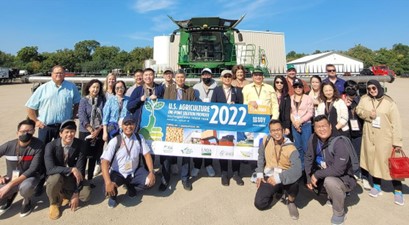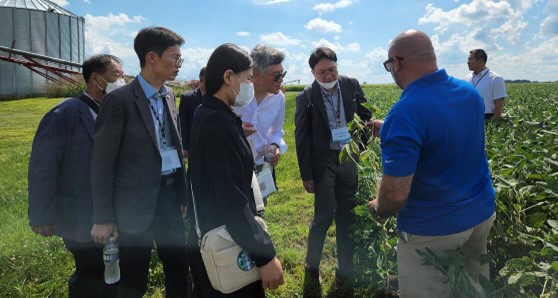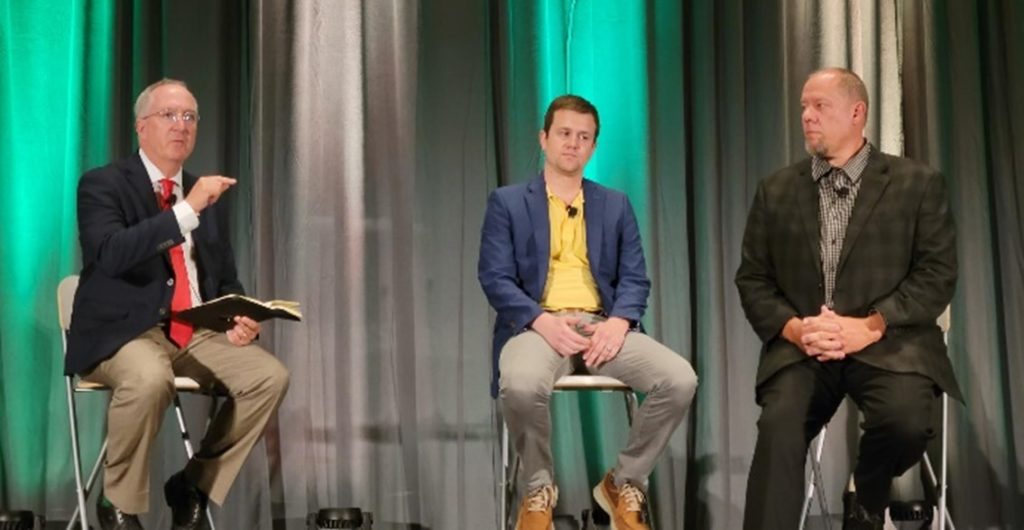USSEC Connects Food Companies Face-to-Face with Soy Food Supply Chain
- Category:
- Event followup
- Soy Foods

Where does this food come from?
Key soy food manufacturers from India, Indonesia, Japan, Korea, Malaysia, the Philippines, Singapore, Taiwan, Thailand and Vietnam can now confidently answer that question. During the 2022 growing season, USSEC, with support from the soy checkoff, hosted several soy food trade teams to show customers the U.S. Soy supply chain in action.
“Our goal is to provide a comprehensive view of U.S. Soy so soy food companies can explain to their customers where their tofu, tempeh, soy milk and other products originate,” says Will McNair, director of oil and soy food programs and deputy director of Northeast Asia for USSEC. “Trade team participants get to sit down face-to-face with key links in their upstream supply chain,”
USSEC intentionally connects soy food company representatives with soy food bean farmers and exporters from a region of the U.S. where they do business.
Trade teams from India, Southeast Asia and Taiwan visited the Northern Plains of the U.S., meeting exporters and farmers in Minnesota, North Dakota and Wisconsin. A group from India took a course from the Northern Crops Institute to learn more about soy protein technology while in Fargo, North Dakota. The Southeast Asia group toured a soy food bean seed research and development facility.

Japanese and Korean trade teams met farmers and exporters throughout Ohio. Trade team participants learned how their partners raise and ship soy food beans to meet their product specifications. For example, the team from Japan visited an Ohio State research laboratory that works on soybean genetics. The Korea trade team visited a river terminal on the Ohio River.

“Soybeans are the most important ingredient for some of our most important foods, like tofu, natto, miso and soy sauce,” says Yuhei Kudoh, executive vice president of Taishi Foods, a Japanese tofu and natto producer. Kudoh was a member of the Japanese trade team that visited Ohio. “It was great to talk with suppliers and growers,” he says. “We shared the importance of soybeans to our customers and culture, discussed how to ensure we have a steady supply and looked for opportunities to collaborate.”
He adds that his company prioritizes quality, sustainability and cost, in that order, when purchasing soybeans. He values sharing those priorities directly with his supply chain.
“This year, we scheduled these trade team visits to coincide with USSEC’s Soy Connext summit, which allowed attendees to get in-depth information about the entire soy market,” McNair says. “In addition, Soy Connext included a breakout session tailored to the soy food industry.”
That Soy Connext session featured experts discussing plant-based protein trends, soy sourcing strategies and more. Soy Connext included countless opportunities for trade team members to connect with additional suppliers and farmers.

“In-person meetings strengthen and solidify relationships,” McNair says. “These visits reinforce the value and sustainability of sourcing U.S. Soy.”
This story was partially funded by U.S. Soy farmers, their checkoff and the soy value chain.